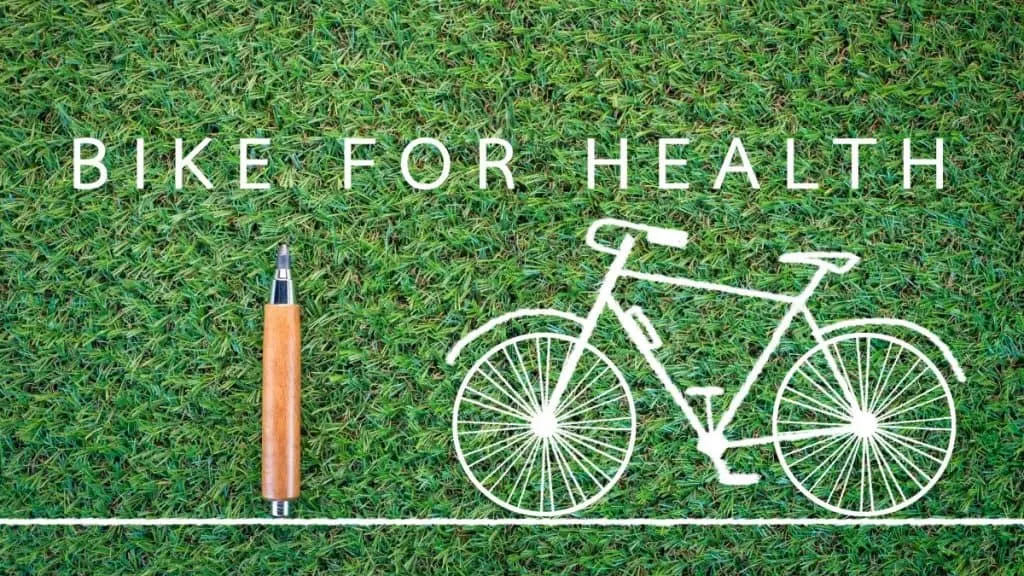
We all know the numerous benefits of biking to work, but if you’re new to cycling, or are thinking about commuting by bike, it can be quite difficult to judge whether your workplace is within a reasonable distance to actually cycle to or not.
People of average fitness likely will have no problem biking 5-10 miles to work every day, while practiced cyclists in good shape may be able to bike as far as 20 miles. Those in poorer physical shape may be able to cycle a shorter distance, but can work up to a longer commute.
It goes without saying that this is a very basic and general answer. Of course, it will be very individual to not only the person doing the biking, but also the individual journey and what it entails.
Let’s look a little more closely at what biking to work entails and whether it is a realistic distance for you or not.
How Far Is “Too Far” to Bike to Work?
Of course, there’s got to be an upper limit on what distance makes sense to bike to work. Nobody wants to have to face a whole day of work already exhausted, so determining whether you live too far to bike to work is important before you go out and buy a bike.
Here’s a breakdown of some distances you might have to travel and an average length of commute by pace for biking around town:
| Distance to work | Estimated commute time at a slow pace (12 miles per hour) | Estimated commute time at a moderate pace (15.5 miles per hour) | Estimated commute time at a fast pace (20+ mph) |
|---|---|---|---|
| 5 miles | 25 minutes | 20 minutes | 15 minutes |
| 10 miles | 50 minutes | 40 minutes | 30 minutes |
| 20 miles | 1 hour 40 minutes | 1 hour 20 minutes | 45 minutes |
| 40 miles | 3 hours 20 minutes | 2 hours 40 minutes | 60 minutes |
As you can see from the table above, unless they’re willing to pedal at break-neck speed, people who have commutes longer than 15-20 miles may not be able to bike to work in a reasonable time frame.
Not that it should prevent those that want to spend the time doing so from biking to work; More power to them! But for most people, over an hour each way is more than enough of a trek.
But there are other factors to think about aside from the distance…
Factors in the Distance of Your Bike Commute
Deciding whether it makes sense to bike to work involves many factors. And it’s important to think of your journey holistically before embarking on the journey. Here are a few things you’ll want to think about:
- how much time you want to spend commuting
- your level of fitness
- the distance between your home and your job against one another
- inclines, stairs, bridges or other things that may prevent/interrupt the biking route
- A place to park your bike once you get to work
These things are all important to think about before deciding if you live within a reasonable biking distance of your job. But to give you a better idea of distance, let’s take a look at how most people need to travel to get to work…
Although biking to work has numerous benefits, it does require some planning and a bit of an investment to commute by bike every day. While only half a percent of people in America bike to work, the percentage is higher in cities and more densely populated areas.
How Far Do Most People Commute to Work?
The majority of Americans drive to work, and most of these people (more than 3 out 4 nationally), drive alone. This has significant impact on air quality, climate change, and people’s pocketbooks.
Most people, as stated above, can handle biking 5-10 miles to and from work. It doesn’t take up too much of your time on either end of your day and gets you plenty of good exercises, which many people need more of. But the more important question is…would their job be close enough to home for biking to be a reasonable option?
While some people live outside what would be considered a reasonable distance to bike to work, most Americans live close enough to consider biking. This averages out to about 16 miles of commute each way, according to ABC News.
This may be a little much for those just starting. While it’s a manageable distance for experienced cyclists, beginners or those in poor shape may have some trouble with distances that long.
QUICK TIP: Consider if there’s a way for you to partially bike to work, such as taking the car up to a certain point and then biking the rest. It’s a great way to get some of the benefits without over committing yourself.
For those healthy enough to hack it, zipping past all those stopped cars you’d usually be stuck behind is a big win. Nothing compares to beating the morning pile up and arriving at work without dealing with nerve-wracking start-and-stop traffic!
How Long Will It Take You to Bike to Work?

So, you want to start biking to work. Good for you! Biking to work is a great choice both for yourself and for society at large, so congratulations are in order.
But you may be feeling a little out of your comfort zone at the prospect of getting to work using your own two feet rather than the comfort of your car. Don’t worry!
While it may initially seem daunting, it’s important to keep in mind a few things that affect the length of your commute. The following things will help you plan your journey a little better:
Distance from Your Job
Naturally, it will take longer to get to your job the further away you live from it. A cyclist of average health going at a moderate pace should be able to consistently travel 12 miles per hour.
The Route to Your Job
The route you choose to get to work also weighs heavily on the equation. Tougher, more hilly terrain will make your commute longer. It is worth mentioning that biking uphill to work means that you can coast on the way home after a long day. Just food for thought.
Your Physical Health
How “in shape” you are will dictate how fast you can travel on a bike. More importantly, it speaks to how worn out you’ll be as your workday begins, which turns many people off cycling to work.
If this is a concern, but you still want to bike to work, starting with some biking in your free time may be the best bet. Get some practice in until you are able to travel the distance to work.
Once you start biking regularly, you’ll be surprised at how much more energetic you feel after a bike ride to work compared to a car commute in heavy traffic.
The Time it Takes to Cycle Rather than Drive
But driving to work is so much quicker! Isn’t that all that matters? Nobody wants to spend even more time traveling to and from work, especially if they’re already getting smacked with a stressful commute.
And who could blame them? The average American’s commute is only getting longer and longer. Why prolong the unpleasantness when you could get there faster in a car, right?
The fact is, once you’re in decent shape, biking 5 miles to work should only take around 25-30 minutes. If you live or work in a densely populated area, you could easily spend that much time navigating your way through traffic in a car or truck.
This is considered to be the lower end of the typical range for biking to work, suitable for most people. Some in poorer physical condition may struggle at first, but with persistence and consistency, it becomes much less of a chore.
Many cyclists find that they actually enjoy commuting to work, rather than dreading the half-hour or more they’d spend cooped up in a vehicle.
How Can You Bike to Work Without Getting Sweaty?
Even if the commute itself isn’t too long, you may run into problems showing up to work all smelly and coated in sweat. Nobody wants to spend a whole shift, wondering if they have an offensive odor. So how do bike commuters stay fresh even after a moderate workout?
Here are some tips for not showing up for work a sweaty mess:
- Bring a change of clothes: If you’re worried about having to wear the same sweaty clothes all day, packing a back-up set or riding in less formal wear and changing before work may be a good workaround for you.
- Store bags, etc., on the bike rather than your back: More of a factor in the summer, having a backpack or satchel will increase the amount of sweat on your back since it can’t breathe as well while obstructed.
- Slow your pace: Going at a reduced pace may seem unappealing to those who are on a tight schedule, but even a slightly slower pace can make the difference between a gross, sticky day in the office or a cool, comfortable one.
- Use appropriate gears: This is a really important factor that some new cyclists overlook or misunderstand. Using the appropriate gear while you ride your bike will save you tons of unnecessary effort, helping you keep sweatiness to a minimum. Low gears allow you to pedal uphill with less resistance, while higher gears are better suited to flat or downhill sections of road.
For further tips on avoiding sweat when getting to work by bike, check out my article “11 Tips to Avoid Sweat and Body Odor When Biking to Work”
Why Should You Bike to Work?

Maybe you’re still on the fence about riding your bike to work instead of driving. Why go through all that trouble and show up to work worn out? Workdays are tough enough. Why add to it?
While those are reasonable objections, many people find them outweighed by the benefits of biking to work.
There are plenty of reasons that deciding to bike to work is a great call:
- Saves money: The average driver spends over $1900 a year on gas and motor oil. You’ll significantly reduce this expense by taking your bike to work instead of the car. You’ll also reduce the wear and tear on your primary vehicle, lengthening its lifespan. With the rising cost of both new and used cars in recent years, this is worth considering.
- Time to relax: Many cyclists find riding to work is far less stressful than navigating their way through a sea of cars and trucks. Being able to avoid that is invaluable to those who’ve had their fill of gridlock commutes.
- Reduce your carbon footprint: An average American vehicle releases 1.2 pounds per mile of carbon dioxide. Taking the bus will save about half of that, but biking to work cuts your commute’s carbon footprint to less than 1 gram per mile.
- Improve your health: From weight loss to cardiovascular improvement to psychological benefits, biking regularly is a great way to improve your health.
Health Benefits of Biking to Work
As stated above, biking regularly has a wide range of health benefits. These benefits all increase over time, especially if you’re biking around the recommended 30-45 minutes a day. Hitting that mark should be easy since even a 5-mile commute at a moderate pace takes about 50 minutes round-trip.
Here are some of the health benefits you could see after biking to work for some time:
Manage or Lose Weight
Biking every day is great exercise and can help people manage or lose weight, depending on the distance and intensity of their ride.
Riding further and in rougher terrain may burn more calories, but it may not be the best idea before work. Even a moderate-intensity ride to work in the morning can kickstart the metabolism and help burn off fat.
Stronger Legs
Specifically strengthening the thighs, glutes, and calves, biking builds leg strength without the strain on the joints when running, hiking, and other forms of cardio often have.
Stronger legs will eventually make biking to work much easier, and as you ride more, it will be less a tiring expense of energy and more an invigorating way to get around.
Improved Core Strength
Your abs and back also play an important role in cycling, and they get a good work out too. A strong core is essential to maintaining proper balance while riding your bike, especially at higher speeds. This will help improve posture and stabilize your gait as well.
Prevent or Manage a Variety of Conditions
Staying lean and fit has been shown to reduce the risk of cancer, which biking every day will go a long way towards achieving.
Getting regular cardiovascular exercise like that from biking, is extremely helpful in preventing heart problems like strokes, high blood pressure, and heart attacks.
Regular exercise is also a great preventative for type II diabetes, so for those with a family history, it may be a good idea to start taking the bike to work.
Boost Energy Levels
It may seem contradictory, but as long as you don’t overdo it on the way to work, you should feel more energized than when you left home.
The increase in circulation leads to increased alertness, and getting exercise first thing in the morning kickstarts the metabolism, so you maintain that heightened energy level throughout the day.
Improved Mental Health
Biking has been shown to reduce stress and anxiety, promote a good mood, and improve sleep. These are all key factors that exacerbate mental health conditions. Reducing them by exercising regularly goes a long way toward improving one’s overall mental health.
How Safe Is Biking to Work?
Biking to work is by no means the safest way to get around. Commuting by bike was linked in a 2020 study to a 45% higher likelihood of getting badly injured or killed while on the road than other methods.
Earlier studies support this finding, labeling bicycles as second only to motorcycles to run for the most dangerous way to commute. Biking to work was also found to be 500 times more likely to result in a fatal accident than commuting by bus. But does that mean you can’t be relatively safe while you bike to work? Absolutely not!
There are plenty of measures that you can take to improve your safety on the road. Take these simple steps to make your bike rides safer:
- Wear brightly-colored clothing: Wearing bright clothes or clothes that otherwise stick out improves your visibility, reducing the likelihood you’ll be overlooked and struck by a driver.
- Put a headlight and reflectors on your bike: Reflectors and lights act in much the same way as wearing bright clothes, making you easier to see on the road. Having a headlight makes you even more noticeable while also improving your field of vision when it’s dark out, like during early morning rides in the pre-dawn dusk.
- Get side view mirrors for your bike: With cars whizzing past you on the way to and from work, you’ll want to see them as they approach you, so a pair of mirrors is highly recommended.
- ALWAYS wear a helmet: Nobody wants to get a nasty concussion on the way to work, but that’s what you’re risking if you take your bike on the road without a helmet. Be sure yours always fits properly and is snugly held to your head to ensure you get the most protection possible from your helmet.
- Check your breaks regularly: Making sure your bike is up to snuff is vital to ensuring your safety on the road. Parts eventually wear out and have to be replaced, so watch closely for signs of wear. Brake failure is almost guaranteed to result in an accident of some sort.
- Ride in designated bike lanes: Most cities have an ever-expanding network of bike lanes and bike trails that make it much safer to get around town without worrying about a car sideswiping you during a lane change.
Check out my recommended gear section for my favorite city biking safety gear.
If you’re willing to take a measured risk, then biking to work is a great way to get to work. Since most people live within a reasonable range of 15-20 miles from their job, biking to work is likely a great way to integrate exercise into their day. Plus, you can save yourself some money and help save the planet. It’s a winner all around.
